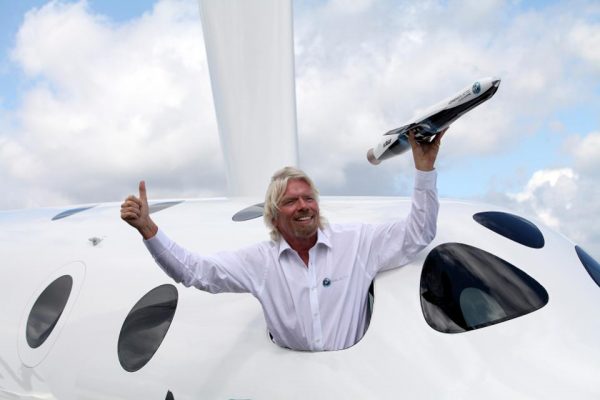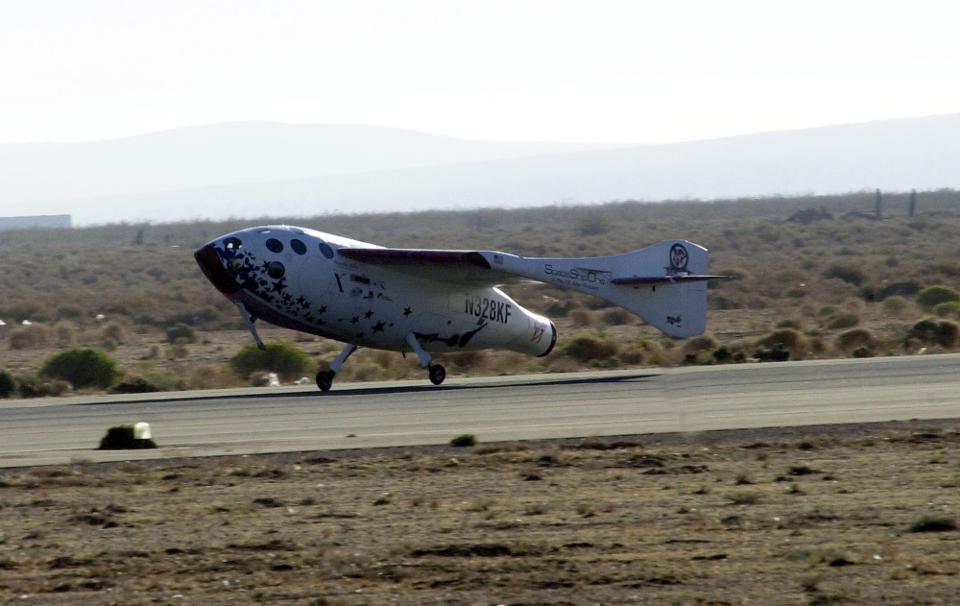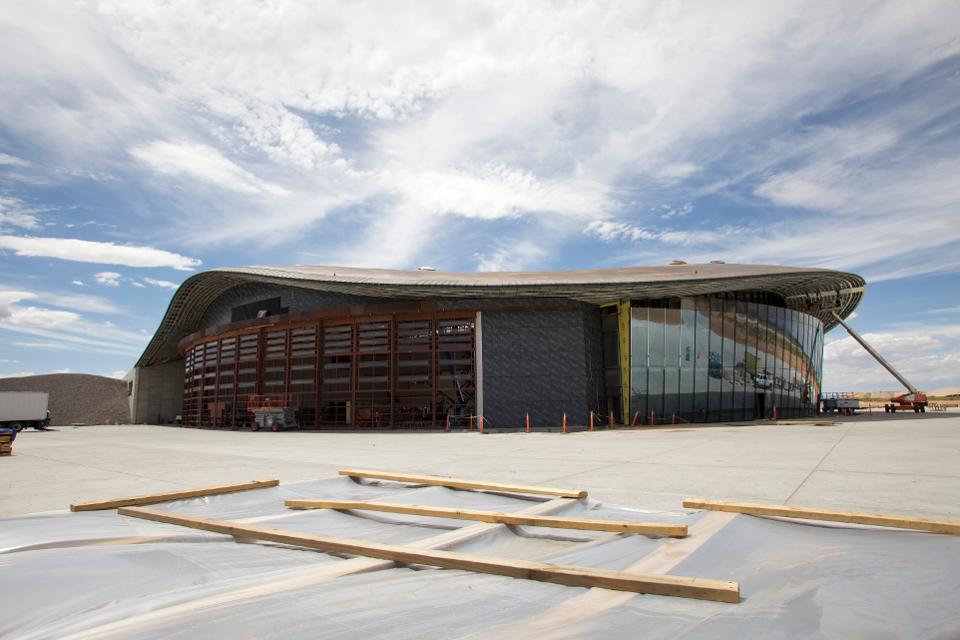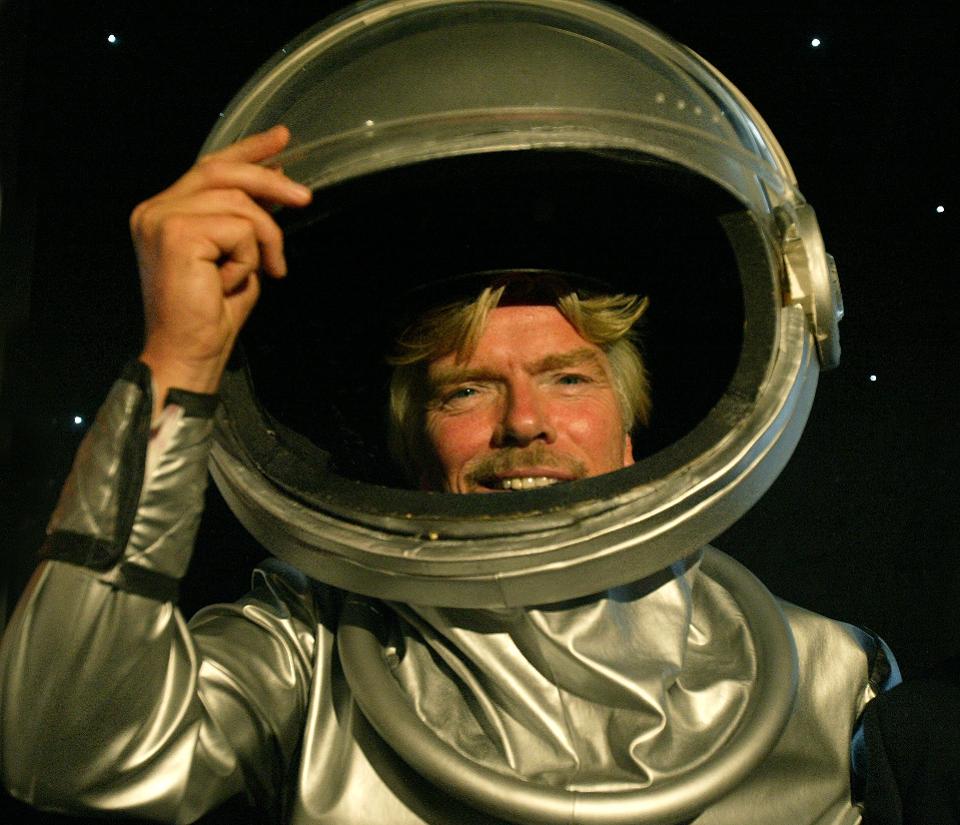Will Investors Buy Into Virgin Galactic’s Brand Of Space Tourism? – Forbes

Richard Branson, poses for photographers with a model of the LauncherOne rocket, from the window of Virgin Galactic’s SpaceShipTwo, on the third day of the Farnborough International Air Show in Farnborough, U.K., on Wednesday, July 11, 2012. The
BLOOMBERG NEWS
This week, Virgin Galactic, the space tourism company founded by Sir Richard Branson (in 2004) announced it will go public.
The proposed IPO is part of what’s billed as an $800 million deal with venture capitalist Chamath Palihapitiya’s investment company Social Capital Hedosophia (SCH). Under the announced terms, Branson, founder, and chairman of Virgin Galactic, will sell a 49% stake in the company to SCH, in a transaction valuing the company at $1.5 billion. Palihapitiya will invest $100 million in cash.
The headline of the press release reads, “Virgin Galactic and Social Capital Hedosophia Announce Merger to Create the World’s First and Only Publicly Traded Commercial Human Spaceflight Company (my italics) .
When listed, reportedly later this year, Virgin Galactic will indeed be the first publicly-traded “commercial human spaceflight company.” Such relentless optimism seems to be the norm among private space flight promoters. Gwynne Shotwell, President and COO of rival SpaceX (an Elon Musk company) told CNBC last May that SpaceX “can’t go public until we’re flying regularly to Mars.”
Such promises are par for the course for the fledgling space tourism “industry.” Virgin Galactic, for example, launched in 2004 with heady promises to fly tourists into space by the end of that decade. Earlier that year, I took my son out of middle school to watch SpaceShipOne soar over 300,000 feet to win the X-Prize. Later that year, the Virgin Group and SpaceShipOne’s builder, Scaled Composites, joined forces to create Virgin Galactic.

SpaceShip One, with Astronaut Brian Binnie onboard, lands at Mojave Airport, following his suborbital flight to win the Ansari X Prize in Mojave, California, on Monday, October 4, 2004. Photographer: Susan Goldman/Bloomberg News.
BLOOMBERG NEWS
Back then, even the respected New Scientist got on board the space tourism bandwagon. A July, 2005 article confidently wrote, “Space tourism is set to boom in 2008. That is when Virgin Galactic plans to start carrying paying customers to the edge of space in a fleet of suborbital spaceships.” A Virgin Galactic executive told New Scientist that the company hoped to carry 400 passengers, each paying a couple of hundred thousand dollars, in the first year, growing to 2000 in the second year and 3000 in the third.
Fourteen years after that article appeared, although Virgin has taken deposits totaling $80 million from 600 people, not a single paying passenger has flown. Virgin Galactic’s competitor in the race to sub-orbital space, XCOR, designed a two-seat Lynx space plane and promised lower flight costs. More than 280 people put down deposits on what were supposed to be $100,000 flights to the edge of space. Unfortunately, XCOR filed for bankruptcy in November 2017, leaving customers battling for pennies on the dollar.
As for Virgin Galactic, the newly-announced plan is the latest in a series of outside investments. Forbes.com noted that before the announced deal, “Virgin Galactic had raised about $1 billion on an estimated $1.72 billion valuation, according to Pitchbook.” Earlier, it had been reported that of the $600 million raised by 2014,, about two-thirds came from Abu Dhabi. The US state of New Mexico outbid California, spending $220 million of taxpayer money to build Spaceport USA outside Truth or Consequences for Virgin. As The Atlantic noted, although “the spaceport has been flight-worthy since 2010, the first launch by its anchor tenant, Virgin Galactic, still hasn’t taken off.”

The Terminal Hangar Facility at Spaceport America stands in Sierra County, New Mexico, U.S., on Thursday, July 14, 2011. The future home of Virgin Galactic is behind schedule and its director says it won’t generate as many jobs as backers once
BLOOMBERG NEWS
In 2017, an additional one billion investment by Saudi Arabia (with an option for an additional $480 million) was announced. However, Branson announced he was “suspending” the Saudi partnership. He wrote we “sadly had to pull away from an investment by Saudi Arabia after the murder of journalist Jamal Khashoggi.”
While Virgin Galactic has overcome such financial issues, it has had other setbacks. Most notably, on October 31, 2014, the first SpaceShipTwo VSS Enterprise broke up on its fourth powered test flight, crashing in the Mojave desert outside Mojave, California. An NTSB investigation revealed that co-pilot Michael Alsbury had triggered the space plane’s “feathering” re-entry system too soon. Alsbury was killed in the crash while pilot Peter Siebold was seriously injured.
Virgin Galactic has come back since that disaster. The company built a new SpaceShipTwo, which was launched from its mothership WhiteKnightTwo in December 2018. The flight reached the edge of space, hitting a peak altitude of 83 kilometers (about 51 miles) and a top speed of Mach 2.9 before gliding back to Earth and landing safely. A second flight in February 2019 hit 89.9 kilometers and Mach 3 while carrying a third person, “passenger” Beth Moses, chief astronaut instructor for Virgin Galactic.
Virgin Galactic says it plans to begin commercial flights later this year. The irrepressible Branson, 69, has long said he’ll be one of the first passengers—although he has just a week to make good on his promise to fly on the 50th anniversary of the moon landing.
Will investors join billionaire Branson in taking a stock market ride on Virgin Galactic? Skeptics might say that buying shares in a 15-year-old travel company that has yet to fly a paying passenger, let alone turn a profit, is as risky as any “unicorn” IPO. On the other hand, much of Branson’s career is based on such audacity. He told a skeptical air leasing executive he was “the guy from Virgin Records” and asked to lease the biggest aircraft he’d ever heard of, a 747. The gamble paid off, as Virgin Atlantic is celebrating its 35th year in 2019.
The new investment, according to Branson, will “open space to more investors and in doing so, open space to thousands of new astronauts.” And with characteristic modesty, he added, “We are at the dawn of a new space age, with huge potential to improve and sustain life on Earth.”

(AUSTRALIA OUT) Sir Richard Branson announces Australia’s first private astronauts in Sydney, 13 December 2005. SMH Picture by ROBERT PEARCE (Photo by Fairfax Media/Fairfax Media via Getty Images)
Fairfax Media via Getty Images






